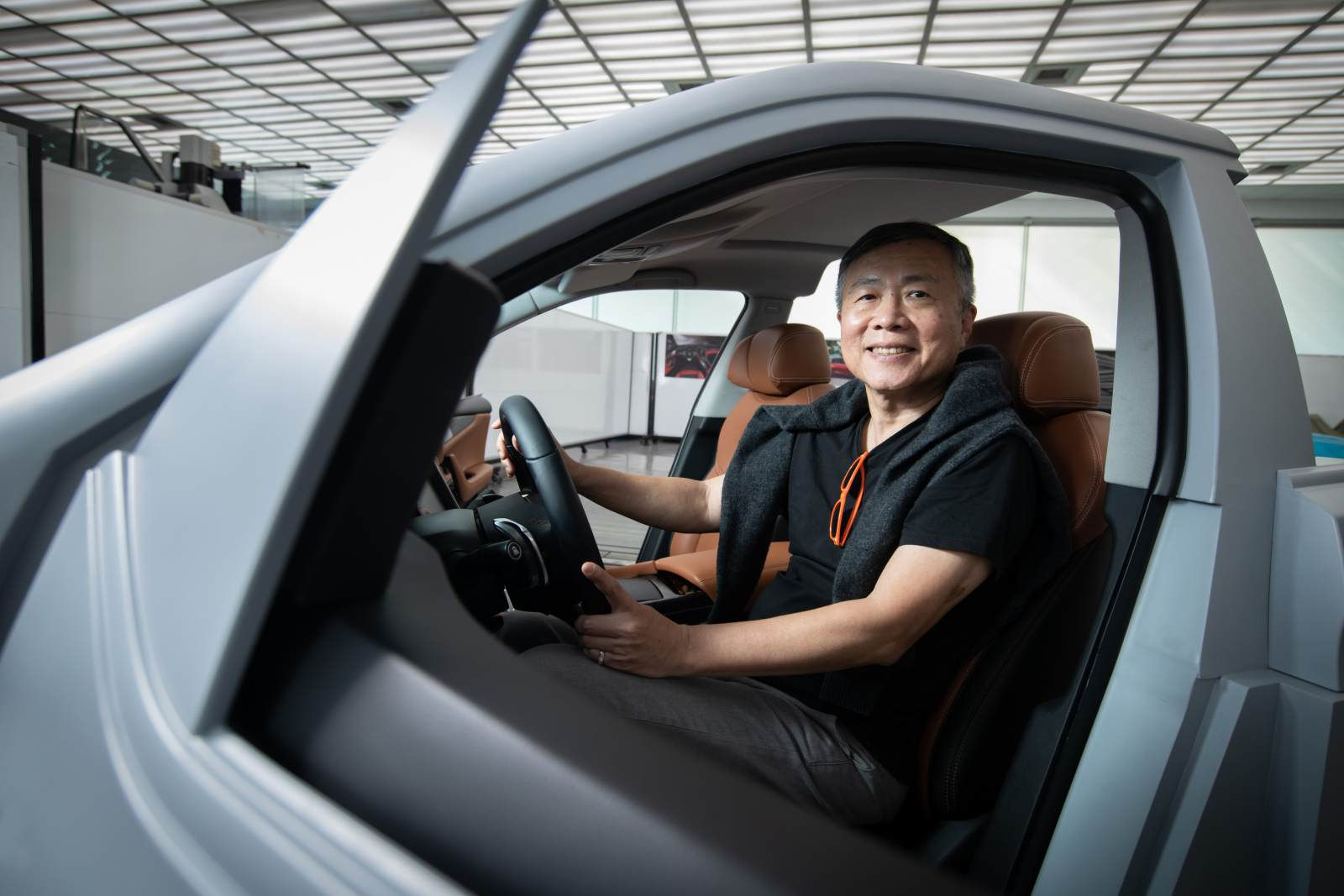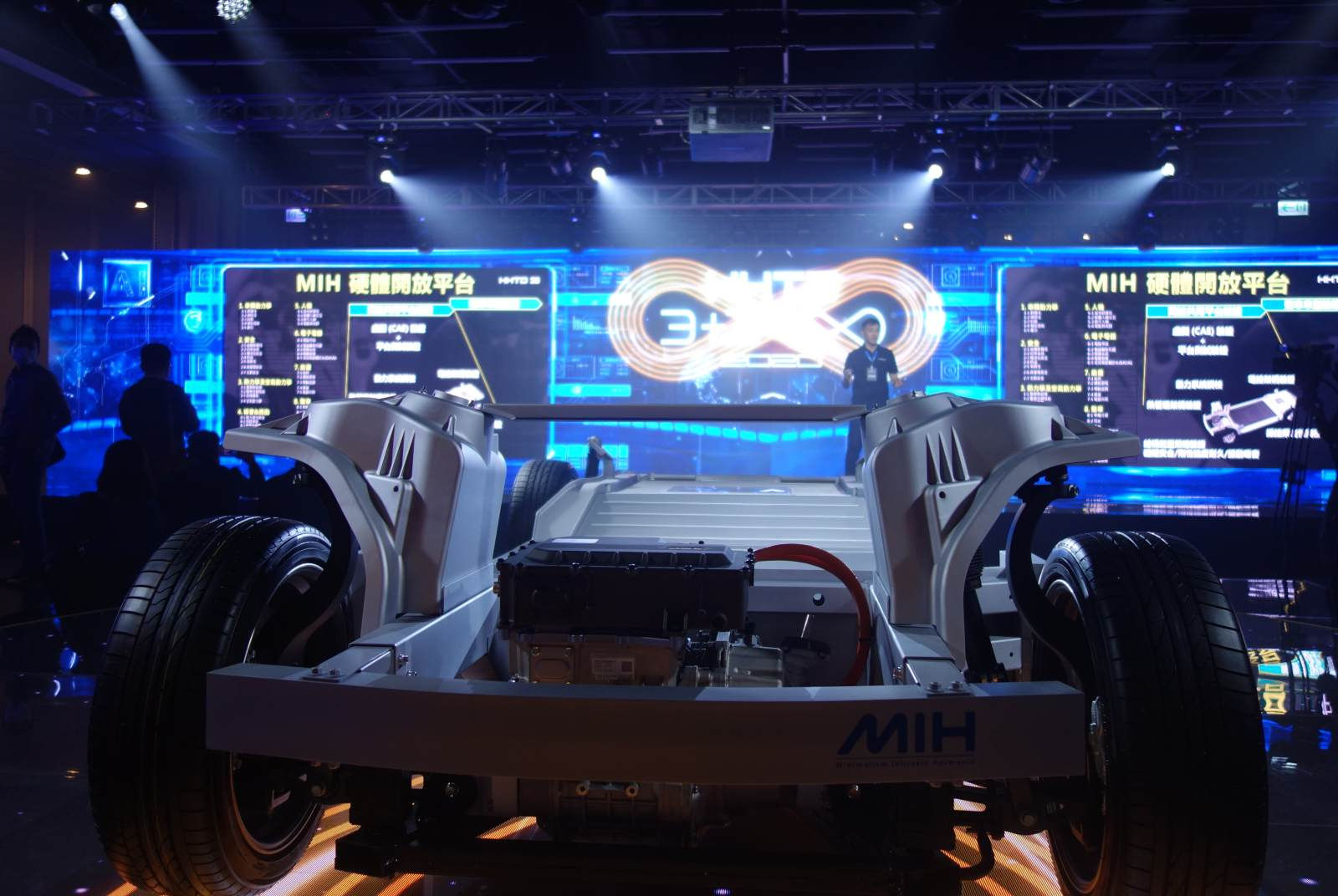Will electric vehicles send Hon Hai’s gross margin over 10%?

Source:Ming-Tang Huang
The numbers are in: Hon Hai’s annual revenue broke new ground in 2020. However, its net profit margin was the lowest in eight years. Can Hon Hai Chairman Young Liu salvage the gross margin by throwing his weight behind electric vehicles?
Views
Will electric vehicles send Hon Hai’s gross margin over 10%?
By Elaine Huangweb only
During its earnings conference call on March 30th, Hon Hai announced that its consolidated revenue for the year 2020 was a record-breaking NT$5.35 trillion. But due to effects of the COVID-19 pandemic, its net profit margin was only 101.794 billion, the lowest in eight years.
Investor representatives from around the world were most interested in Hon Hai’s electric vehicles, which have lately boosted stock prices up to 130 dollars. Hon Hai Chairman Young Liu was repeatedly asked: Will electric vehicles send Hon Hai’s gross margin over 10%?
Repeatedly, Liu replied: Electric vehicles are Hon Hai’s future.
“It was thought that electric vehicles would take off in 2024 or 2025. The forecast has now been revised to 2023. It is looking more and more likely that Hon Hai’s gross margin will reach 10%,” Liu stated.
He revealed that this June, Hon Hai would establish an electric vehicle assembly line in either Mexico or the United States.
Apple for the short term, EVs in the long run
Ever since Liu took on the mantle of Chairman, electric vehicles have been a key part of his “3 plus 3” initiative to fundamentally transform the company. A senior tech analyst who has kept tabs on Hon Hai for years reports that, since EVs are Liu’s baby and essential to Hon Hai’s transformation, “it is a business venture that can only succeed, not fail.”
According to a report published on March 22nd by Fubon Financial, in the short term, producing smart devices for Apple and server products will bring in a considerable amount of revenue for Hon Hai. However, “in the long term, we maintain a positive attitude toward Hon Hai’s EV strategy and MIH open platform.”
In the report, Fubon’s tech industry analyst Arthur Liao points out that paradigm shifts in the tech industry happen on a decennial basis. From the year 2000 until 2010, laptops were the focus. From 2010 until 2020, it was smart phones. “Electric vehicles will be the focus of this decade.”

MIH's CEO, Jack Cheng. (Source: Ming-Tang Huang)
In 2020, Hon Hai acquired Haitec and established Foxtron Vehicle Technologies to develop electric vehicles. Then, it announced the MIH Open Platform Alliance and tapped Jack Cheng, Ford Motor alumni and cofounder of Chinese EV company NIO, for CEO. His counterpart is CTO William Wei, who used to work for Apple and has been put in charge of software. Together, the two of them will build an open platform for electric vehicles. Over 1,300 companies around the world have already joined the alliance.
However, despite the increase in stock prices, many investors are skeptical: How will this collaboration actually affect Hon Hai’s revenue and bottom line?
Building whole vehicles with strategic partners while improving profits
According to Hon Hai’s internal analysis, just doing contract manufacturing for electric vehicle companies will only result in a gross margin of under 5%. That’s not much better than doing old-fashioned outsourcing work for consumer electronics. Producing components for electric vehicles will bring in a gross margin of about 25% to 30%. That’s on the level of American and European auto components and systems manufacturers like Bosch, Magna, and Continental. The gross margin of making the entire vehicle is around 20% to 30%.
“Hon Hai’s approach to electric vehicles will focus on component manufacturing; at the same time, we will work with our strategic partners to manufacture the whole vehicle.” Liu stresses that this will be the key to lifting Hon Hai’s net profit margin to 10%.
Among the components Hon Hai will focus on, the three key products are batteries, electrical control systems, and software. It is worth noting that not long ago, Foxtron Vehicle Technologies announced a collaboration with Nidec, the biggest electric motors manufacturer in the world. They will be working on improving the electric vehicle’s powertrain by working on the MIH’s open chassis power platform for electric vehicles.
“Independent research on key components will no longer cut it. Collaboration between interested parties is a necessity,” says Liu.
The strategy is clear. A look at Hon Hai’s EV partners reveals that Hon Hai itself will not introduce an EV brand. Rather, it will be working with auto brands such as Taiwan’s Luxgen, and it announced a partnership with the newly listed American startup Fisker and China’s Byton this February. Whatever the customer’s manufacturing needs, Hon Hai is ready to provide. What’s more, Hon Hai is working with Geely Automobile in China and Yulon in Taiwan to create a vertically integrated supply chain and provide outsourced manufacturing for the whole vehicle.
In other words, Hon Hai is the command center that combines the know-how of MIH Alliance members to approach potential customers in the auto industry. It is looking for an entry point into the EV market.
 (Source: MIH)
(Source: MIH)
“The development of MIH has been faster than I imagined. Our call has been answered by many members. Whether they are conventional car manufacturers or brave new startups, everyone is optimistic about MIH’s future,” Liu says.
The roadblock ahead: not enough talent in the EV industry
“What keeps us up at night is whether we have enough talented minds capable of shouldering the burden and fulfilling our customers’ needs. That is the biggest roadblock in my mind,” says Liu.
A March report from Morgan Stanley forecasts that by 2025, Hon Hai can expect to reap US$35 billion in revenue from its EV manufacturing business. EVs will make up 15% of Hon Hai’s overall revenue and provide a gross margin of 18%, which equates to 30% of the conglomerate’s overall profit.
The boost to stock prices is also wind in Liu’s sails. In the past six months, stock prices have grown as much as 60%, attaining a historic high of 130 dollars per share.
But a senior manager at a contract manufacturing company has a less rosy view. “Electric vehicles and their boost to stock prices are old news; it’s already past its prime.” After all, electric vehicles currently contribute very little to Hon Hai’s revenue. It remains to be seen if collaborations with Chinese, European, and American automakers will actually bear fruit.
The truth of the matter is, manufacturing smartphones for Apple has reached a growth ceiling. Even if EVs are still a long way from becoming a key pillar of Hon Hai’s revenue, it is a path the manufacturing giant must take if it is to transform and grow.
Have you read?
♦ Meet the 1000 ‘hidden champions’ behind Taiwan's car-making dream
♦ Taiwan’s Tesla Boom, and Looking for More
♦ Who is Andes Technology and why is it soaring?
Translated by Jack Chou
Edited by TC Lin
Uploaded by Penny Chiang






